Evolution of the T56
BorgWarner designed the T-5 5-speed transmission that became one of the largest by volume of production. Using a very simple single-rail shift mechanism, the T5 was lightweight, came with a 5th-gear overdrive to add to fuel economy, and had a torque rating useable in engines of the period. The first T5 models used brass synchronizer rings and straight roller bearings to support the countershaft. BorgWarner refined the design and created “The World Class T5,” which used synchro rings lined with the same kind of paper material used in automatic transmissions, and went to tapered roller bearings for the gear train. The weak point of the T5 was its small size, which was easy to package in the diverse models of cars that used it, but with such a small centerline between the input and the countershaft, torque was limited to a high of 330 lb.-ft.

Vacuum Testing Ford 6F35
From the TASC Force we reprint a series of in-depth test instructions for checking the serviceability of valve bodies.

How did that happen? Part 3
No one wants to have comebacks or waste time with difficult diagnostic issues, but in the long term they are truly educational.
This third article in a series explores real world problems and fixes. This material is based on a huge volume of technical calls and field fixes that we live through in the course of doing business.

Serviceability Report: Kia Soul
Let’s take a look at Kia. Is it easy to service?
Kia was a poorly made car when this Korean company brought its 1994 Sephia to America. Kia made cars for Ford/Mazda prior to 1994, but most people had no idea where they came from. Remember the Aspire from Ford? That was a Kia.
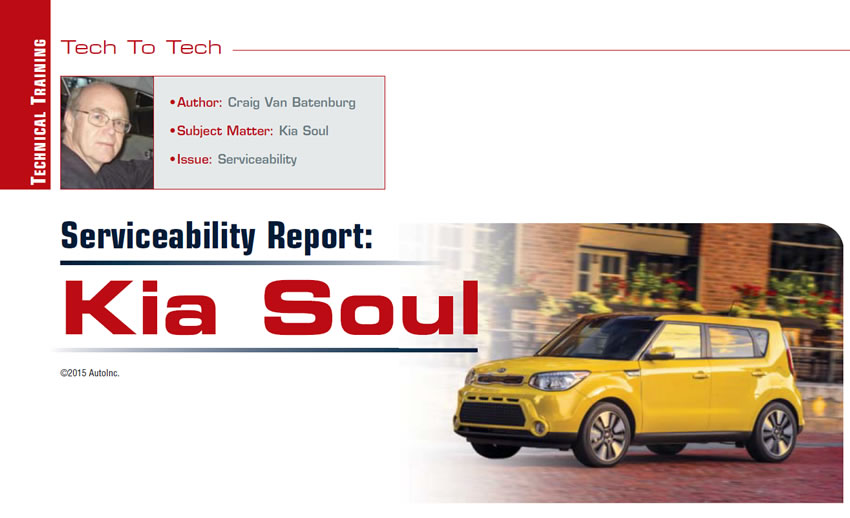
August 2015 Issue
In This Issue
62TE gear-ratio error
45RFE output shaft park spline
Mazda 3 with erratic shifting
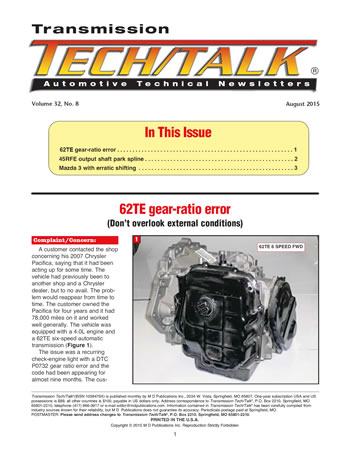
When system failures interact
By now, everyone in the automotive industry should be aware of the infamous Nissan radiator issues that cause antifreeze to contaminate the transmission oil (and vice versa). If you’re not, you should research the topic as the implications are many. This issue isn’t as easy to detect as it was several years ago. Today’s transmission fluid doesn’t always tend to froth up into the “pink milkshake” that was always a telltale sign of contamination. Small amounts of glycol can wreak havoc on the transmission, and many times a test kit is required to detect it. I know this is nothing new, but perhaps a refresher with a few new things that you may have not previously considered. The vehicles I will be referencing will be a 2005 Nissan Pathfinder 4×4 and a 2007 Nissan Pathfinder that had related issues all within the last six months.
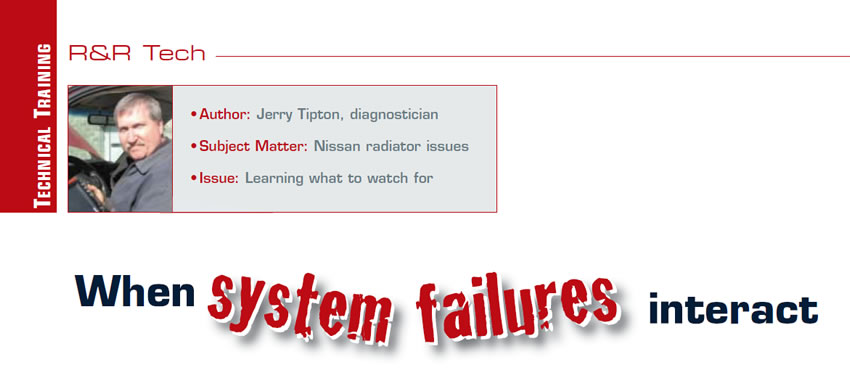
How did this happen? Part 2: Are we working on the right component?
Many problems in particular noises confound the diagnostic routines. There is an inbred genetic code in all transmission men to instantly wish to pull out the unit. Force yourself to avoid removing any component until all external sources of the complaint have been examined.

July 2015 Issue
In This Issue
Manufacturers of CVT Transmissions
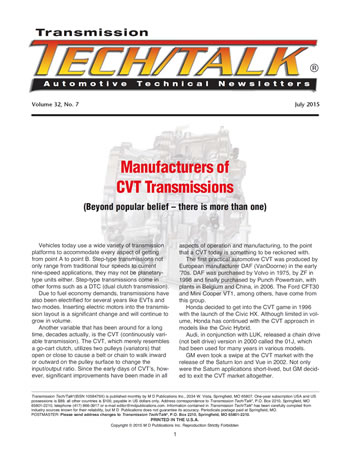
Vacuum Testing: Ford 6F50, 6F55
From the TASC Force we reprint a series of in-depth test instructions for checking the serviceability of valve bodies.

Mazda CX7 Shift Issues with DTC (Component Appearance May Be Deceiving)
A customer arrived at the shop driving a 2007 Mazda CX7 equipped with 2.3L engine and a six-speed automatic. Depending on year, a Mazda CX7 could have several different transmission types from four-speed to six, but this model has an Aisin TF81SC (AW6A-EL).
The customer stated that recently the transmission was acting a bit strange and that the check-engine light would come on as well. The vehicle was taken for a test drive and sure enough a problem existed: erratic shifting. At times though, the unit seemed to work fairly well, which meant at least all of the basics were there.
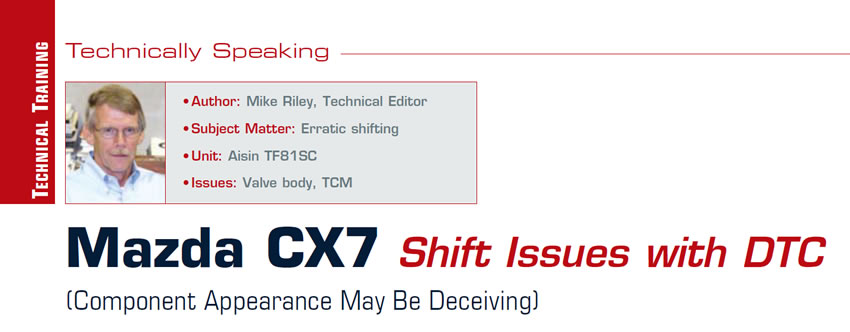
Magic Boxes and Basic Wiring
However, one thing that has remained fairly constant through the years is the wiring that connects to all of those “magic boxes.” Copper wires in a vinyl sheath; seems simple enough. Where it gets a little complicated is with CAN network protocols, module connectivity and the like. It’s easy to suspect these things when diagnosing a customer issue, and just as easy to forget the basics. The following cases involve the latter: basic wiring issues creating a customer complaint.
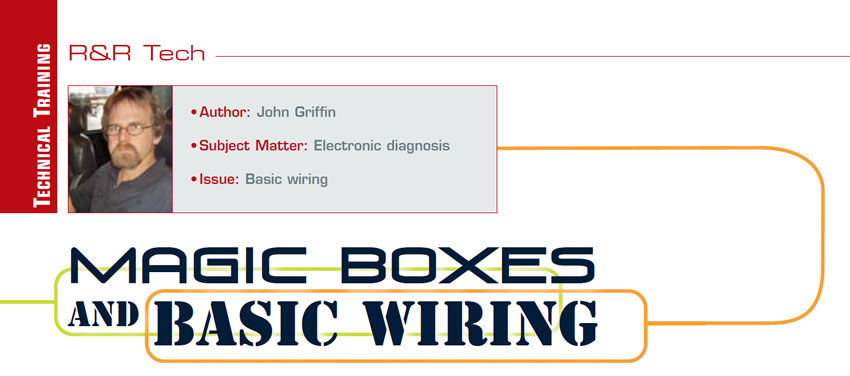
Age-Related Issues Call for Alternative Measures
With the average age of vehicles on the road hitting an all-time high of 11.4 years, I continue to revise my path of diagnostic “what ifs?” The preponderance of age-related issues creates the need for me to consider alternative pathways to identify the root cause, especially when diagnosing intermittent concerns.

